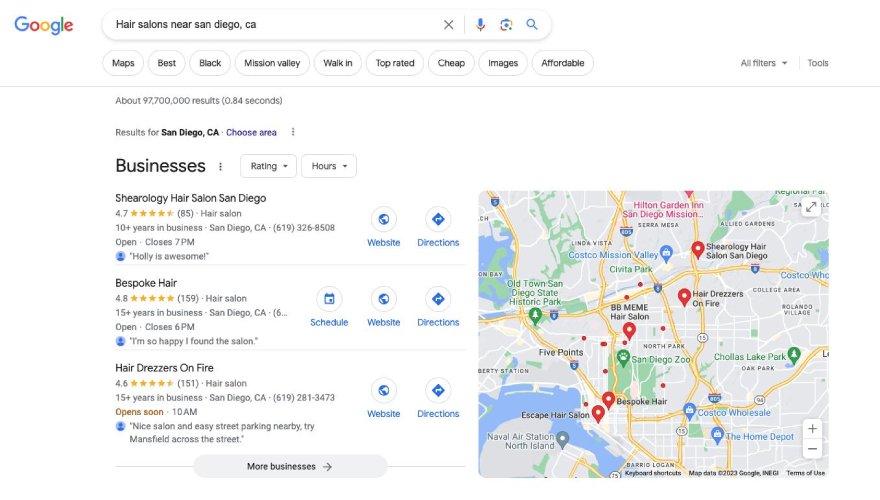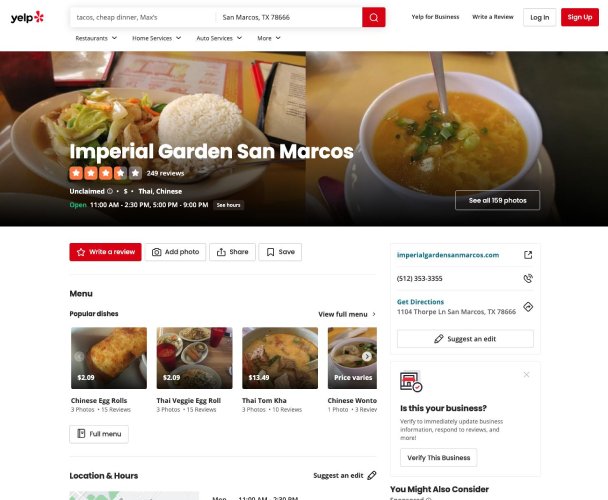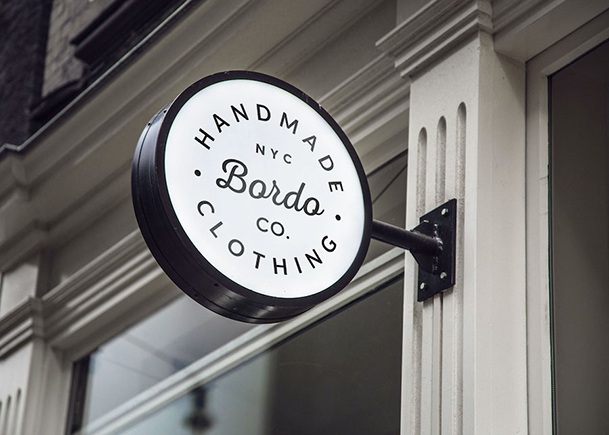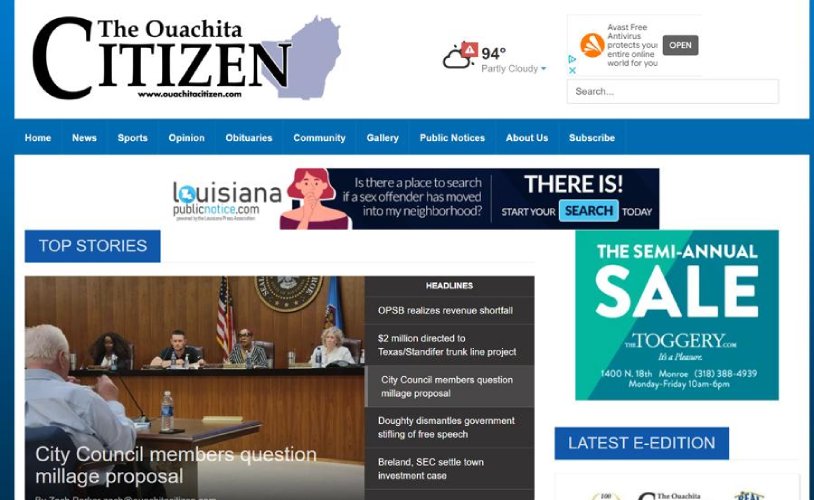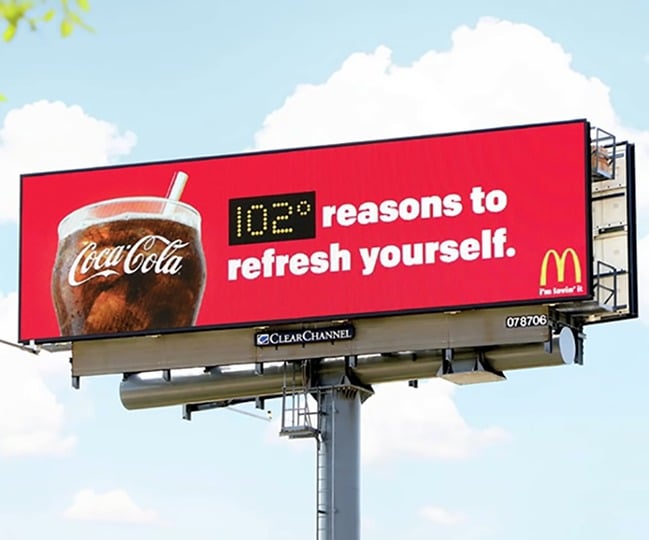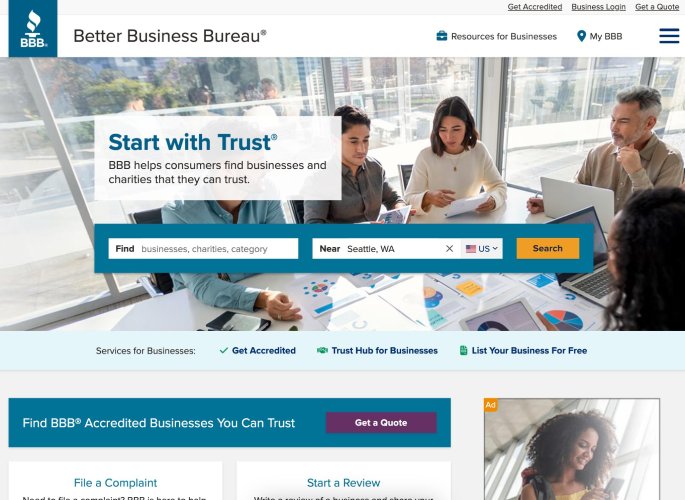Creating a local marketing strategy is a critical step to helping your business grow and flourish. With an effective marketing plan, you’ll be able to identify and connect with potential customers, build a strong brand, and convert leads into sales. Download the marketing plan template below and use it as you walk through the steps of outlining your local marketing strategy.
Local Marketing Plan Template
Use our local marketing plan template to create your roadmap for building a strong brand presence. It’s completely customizable. To use and edit it in Google Workspace, save a copy of the local marketing plan template file to your drive. To use it with Microsoft 365 or other word processing programs, save it for Microsoft Word to your device or OneDrive.
Thank you for downloading!
💡Quick Tip
Want expert help with local marketing? Get a free consultation from Straight North. They’ll explain the best marketing strategies to pursue and build a plan to grow your business to the next level.
1. Define Your Audience
Defining the audience (aka target market) is a core part of any marketing strategy. It allows you to determine the size of your potential customer base and develop compelling messaging and marketing tactics to attract them. To define your audience, determine the geographical size of your service area, research the demographics, and create customer personas for your ideal customer types.
Simply put, the local service area is the geographic region you plan on servicing. It may be as big as a few counties or as small as a couple of neighborhoods. Defining the local service area sets parameters you’ll use to help choose what advertising you’ll run, the message you’re putting out to potential customers, and even the prices you set for your products or services.
To set a local service area, you need to accurately and honestly assess how big a market your small business can support. If you’re running a landscaping business, your local service area may be reserved to a few key neighborhoods. But if you’re operating a retail boutique, perhaps your customers are coming from farther away. Setting the parameters of your service area means setting yourself up to succeed in servicing the customers you’ve chosen.
Another important component of defining your audience is exploring the demographics of your local service area. That means you’re asking a series of questions about the people who live and work within your defined geographic area. This means finding answers to questions about average household income, family sizes, homeownership rates, the age of individuals, and more.
Start your local market demographics research with a tool like Claritas. With just a ZIP code, you can find information about household income, household size, age, and more. For many small businesses, this will be enough information to create a picture of your ideal customer.
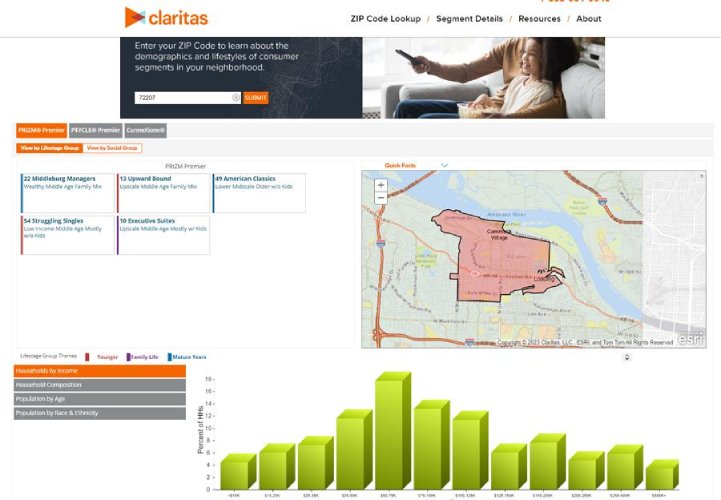
An example of free local marketing demographic research results with Claritas (Source: Claritas)
Some other potential sources of local demographic info include:
- U.S. Census Bureau
- City, county, and state websites
- Local tourism bureau
- Your local chapter or the U.S. Chamber of Commerce
- Small Business Administration
Regardless of the source of your local market demographics, once you’ve collected the information, you’ll have an understanding of the local customer base. This puts you in a better position to outline goals, decide which channels you’ll tap into, and build the rest of your local marketing plan.
For your business to survive, the customer personas you create must be represented adequately within your selected service area and its demographics. It’s likely that you’ll end up with more than one ideal customer type, or customer persona. The aggregate of your personas can then be used to describe your target audience.
Use the table below as a template, or read our article explaining how to create customer personas, which includes a free downloadable version.
Characteristic | Customer Persona |
|---|---|
Age Range | |
Gender/s | |
Household Income | |
Interests | |
Education | |
Employed? | |
Professions / Job Titles | |
Pain Points | |
Goals When Purchasing a Solution | |
Messaging / Value Proposition |
2. Set Goals & KPIs
Every business needs a roadmap to grow and prosper. Take a moment to outline the goals for what you hope to accomplish with your local marketing strategy. For each goal, identify the key performance indicators (KPIs) that will indicate progress or success, and how you will measure them. Here are some examples of goals you might set as part of your local marketing plan.
- Increasing revenue by a specific percentage or dollar amount year over year
- Acquiring a set number of new leads/customers a month
- Increasing customer retention by a set percentage
- Decreasing cost of customer acquisition by a dollar amount or percentage
- Increasing local online brand visibility (typically based on local keyword rankings)
- Increasing website traffic by a set percentage
- Increasing customer purchase frequency by a set amount
- Launching quarterly seasonal or limited-time offer (LTO) promotions (and results you want to achieve)
- Increasing coupon redemption by a specific amount
- Generating a set number word-of-mouth referrals
- Increasing loyalty program participation by a set percentage
- Increasing the number of lead sources (e.g., email, word of mouth, social, ads, and so on) or the number of leads produced via channel
- Expand your service area and customer base
- Tap into new customer personas/underserved market
- Launch new product/service and achieve sales of (dollar or quantity) by time period
In addition to specific, measurable goals, your goal statement should include who is responsible to track progress and how (and when) progress will be measured. This gives you the benchmarks to measure progress and evaluate what’s working (and what’s not). In addition, it enables you to hold yourself and your team accountable against objective data points.
A great way to determine whether your goals are specific, measurable, and achievable is to use a system. One popular system is to use SMART goals, and you can quickly learn how to use this system by reading our article showcasing 10 SMART goals and examples.
3. Research Competitors
Getting to know your competition is an essential part of building your local marketing strategy. Researching competitors helps you understand the local market and also points to marketing gaps those businesses are leaving in their own marketing efforts. These gaps represent opportunities for you to connect with potential customers and grow your business.
To research the competition, make a list of direct and indirect competitors. Then, visit their websites and social media, sign up for their emails, and if they have physical locations, go check them out.
Make notes about the messaging and positioning they use with customers. Pay attention to local media and see where they are advertising. How do their advertising efforts convey their message? The goal is to find gaps in their message and marketing that you can step into.
4. Develop a Unique Value Proposition & Craft Messaging
Your message starts with a single question: How does your business solve a problem for your customer in ways competitors cannot? The answer to this question represents your unique selling proposition (USP).
Also known as the unique value proposition (UVP), this is a specific value, product, feature, or benefit your brand provides that isn’t available from local competitors. For example, your product may have unique features, or you are providing services competitors aren’t covering. It could also be that you are able to deliver a higher quality product or service, or provide it in a unique way that appeals to your ideal customer types.
The unique value proposition is a key differentiator between your business and the rest of the competition. It forms the core of your messaging to potential customers for your marketing materials, advertising, landing pages, and more. It should efficiently communicate what it is your business does, and how it benefits potential customers.
Connecting with customers based on your unique selling proposition is the start of a relationship you’ll eventually develop with them along their buying journey. With the right message, that connection begins to form before you ever speak to them. It starts through the marketing and advertising you’re putting out. To get inspiration for your marketing plan, check out these local marketing ideas.
Your unique selling proposition can become the core of your mission and vision statements. To see how other companies have made this work, check out our roundup article of inspiring vision statement examples.
5. Decide on Channels
The local marketing plan you develop will encompass three main factors: your local marketing ideas, the channels you decide to use, and the size of your marketing budget. Our article showcasing how to build a strong brand presence offers an expansive list of potential marketing and advertising channels to consider. But for the purposes of a local marketing strategy, we’ve outlined the key places to start below.
Local Online Marketing
Local marketing online doesn’t just mean putting up a website or a Google Business page, though both are important components of a local marketing plan. Here are some of the basic components of local online marketing:
- Building a website for your business
- Creating a Google Business page and encouraging customer reviews
- Creating a Facebook business page (or for business-to-business sellers, a LinkedIn profile)
- Adding a listing to Bing Places for Business (if you have a physical location)
- Using Yelp for business tools and creating a profile
- For residential service-based businesses, creating a listing on Angi (aka Angie’s List)
Pro tip: A professional-looking website doesn’t have to cost you a king’s ransom. Thanks to all-in-one site builders like Wix, you can build an attractive website yourself for very little money and time. Learn more in our write-up about the best website builders for small businesses.
Increasingly, potential customers are going online before they choose a local business, and meeting them where they are looking is a vital part of your marketing strategy. You’ll want to plan for pay-per-click (PPC) advertising, such as:
- Getting to the top of search pages with Google Local Services Ads when potential customers are searching for a business like yours
- Advertising on Google with targeted pay-per-click (PPC) search ads and website remarketing
- Increase brand awareness with locally targeted social media ads on Facebook (or whichever of the paid social channels is the best place to reach your customer base)
- Creating landing pages for advertising and marketing campaigns to increase conversions
Additionally, there are other ways of connecting online with customers, whether via their inbox, cell phones, or social media accounts, through:
- Permission-based email marketing
- Text/SMS marketing
- Using Facebook for marketing as well as other social media apps (e.g., Instagram, Twitter, marketing on Pinterest, or the new Meta offering: Threads)
As you can see, local online marketing casts a wide net of potential digital marketing channels you can employ. This can be overwhelming, so start with the basics and plan to build from there.
In need of more website traffic? Read our list of website marketing strategies for ideas on how to get more site visits from people in your target market.
Offline Marketing
Offline marketing is a broad category of marketing that encompasses ways to get the word out about your business that don’t involve the internet. From your business’ signage to offline outreach campaigns, here are a few small business marketing ideas to get you started:
- Creative business sign ideas to consider
- Starting a referral program to build word-of-mouth
- Implementing a customer loyalty program to encourage repeat business
- Holding special events such as a grand opening event, VIP customer exclusive opportunity, offering in-person education, or hosting networking events
- Using coupon marketing to attract new customers, promote new products, or extend seasonal offerings
- Holding contests and giveaways to generate buzz about your brand
- Sending direct mail marketing campaigns or using direct mail for hyperlocal marketing inside a neighborhood
- Running a door hanger campaign
Local Advertising
Your local advertising options are extensive and can be expensive if you don’t plan carefully. Start by building a list of local paid advertising options and associated costs. Take your time. It’s easy to get overwhelmed by the choices you have in advertising, and to be fair, not all media types are right for every small business. These outlets can include:
- Ads in local newspapers (see how much newspaper ads cost)
- Advertising in local magazines, or even hyperlocal marketing via ads in a neighborhood-based magazine
- Putting ads in thrift papers like your local Penny Saver or Thrifty Nickel
- Sending ads through mail-based services like Valpak
- Placing ads in local coupon books, like the kind local schools often use for fundraising
- Industry-specific circulars, such as real estate listing booklets
- Radio advertising (see how much radio ads cost)
- Local broadcast and cable television advertising (read our article on TV advertising costs to source affordable options)
- Out-of-home (OOH) advertising on billboards (check out some billboard design ideas)
- Mass transit advertising
- Entertainment venue ads in bathroom stalls
Public & Community Relations
The final component of local marketing is about brand reputation, including both public relations efforts and community investments. This means joining civic organizations, networking groups, or service clubs and sponsoring community activities. It also includes sending press releases when your business does something notable, such as introducing a new product or service, holding an event, or participating in said community events and sponsorships.
Here are a few examples of public and community relations that will build brand visibility and credibility for your company locally:
- Publishing press releases for major announcements
- Holding grand opening, product launch, or open house events
- Membership in your local Chamber of Commerce or Business Networking International (BNI) chapter
- Becoming Better Business Bureau (BBB) accredited
- Joining a local service organization like the Rotary Club
- Sponsoring a youth sports team or scholarship fund
- Supporting fundraising campaigns for local schools or placing ads in school newspapers, yearbooks, or event programs
- Hosting a drop-off location for donations for local food banks or charities
- Making a press kit and adding it to the “About Us” page of your website
- Hyperlocal marketing, like sponsoring a cookout in your prime target neighborhood
- Volunteering with charitable organizations or participating in community clean-up events
While each of these local marketing tactics are less direct than some other avenues, they are invaluable in garnering brand visibility and affinity, which are vital for word-of-mouth marketing. What’s more, they demonstrate your company’s reinvestment back into the community in a way that says your business is here to stay.
Pro tip: Joining professional organizations like the Chamber of Commerce and BBB can mean big gains. The close rate for leads obtained through organizations like these is 40%. Find out more about the power of business networking.
6. Set a Budget
By now, you’re probably asking yourself how much all this will cost, and next, how much you need to budget for marketing. According to Deloitte, most companies spend an average of 10.9% of gross revenue on marketing. As such, a business with revenue of $100,000 for the year would reinvest $10,900 back into marketing and advertising during the same period.
To make things easy, set your initial marketing budget at 10% of gross revenue (the money your business makes before taxes or expenses are deducted). Your budget calculation would then look like this:
Average monthly gross revenue: $__________ x 0.10 = $_____________
Note: If this is your first time allocating money toward marketing, 10% might feel like a lot. If you need to start smaller, do. Then as your marketing investments begin to pay off, increase the marketing budget by focusing on the tactics producing the best return on investment (ROI).
The good news here to keep in mind (and something small business owners don’t always realize) is that marketing is one of the few operational expenses that can yield exponentially more revenue than it costs. So make sure that you track not only how much you’re spending on each tactic, but also track metrics like new leads, customers, and revenue generated.
Once your overall budget is set, you can allocate it based on the marketing calendar in the next step. This will include the cost of tactics like advertising, but should also include costs for software (e.g., website, email marketing, search engine optimization (SEO), and so on) as well as costs for artwork, ad copy, outsourced services, and more.
You can maximize your advertising and marketing budget by enlisting the help of a marketing agency. Choosing the right marketing agency can cut down on the time and waste of learning how to market your business.
7. Build a Local Marketing Calendar
Armed with your marketing budget and the channels you want to use for local marketing, it’s time to lay out your plan on a calendar. Map out the coming 12 months of your business year. Include planned promotions, events, launches, holidays, and so on, and the tactics you plan to use (e.g., email, social media, ads, etc.)
To help you out, we created a sample marketing calendar in Google Sheets. You can use this by saving it as a copy in Google Workspace or downloading it for Microsoft Excel.
For each month, map out what your promotions are and the tactics you’re going to use to promote them. You might plan a Labor Day sale and support it with email and direct mail marketing campaigns, print ads, and radio spots for the weeks leading up to Labor Day. Another example might be an annual special celebrating the anniversary of your business or generating buzz and publicity before a new product launch.
And keep in mind that in some cases, you’ll be building your schedule in reverse. For example, if you’re launching a new product on June 1, in the weeks prior to that, you’ll likely have several marketing tasks to accomplish beforehand. These can include tasks from social media marketing and advertising to email blasts, press releases, ad copy and creatives, new web pages, landing pages, and blog posts.
Pro tip: Almost nine out 10 Google users search for local businesses. That makes local advertising on Google a critical part of your marketing strategy. Read our Google Ads how-to guide to find out how to get started.
8. Measure Your Progress
As you start implementing your marketing plan, it’s important to track progress regularly—at least monthly, at a minimum. For each goal you set for your local marketing plan, ask yourself these questions as you go along:
- Am I making progress toward the goal?
- Am I making progress fast enough to meet the goal?
- Which local marketing strategies are working (and which aren’t)?
- If I’m not making progress (or not gaining ground fast enough), how can I tweak my plan?
The key here is to tie results back to specific marketing activities, and there are several ways you can do this. For example, you can build a dedicated landing page where people who click on your online ad, email campaign link, or social media button are directed. Then track the number of visitors and the number of conversions (e.g., actions a visitor takes on the landing page, like making a purchase, signing up for your list, or scheduling an appointment).
Here are some more resources to help you track which local marketing tactics are working:
- Vanity phone numbers used for specific ad campaigns or channels
- Brand or campaign-related hashtags on social media
- Codeword-based discounts
- Trackable coupons (get coupon examples and ideas for inspiration)
- Landing page builders that have built-in tools for conversion tracking and A/B testing
- Email marketing software for segmented email campaigns and A/B testing
- Point of sale survey questions (e.g., what brought you here today or how did you hear about us?)
- Website traffic tracking tools like custom links via Google tag manager and Google Analytics conversions setup
- SEO website builders like Wix with advanced analytics, artificial intelligence (AI) tools like heatmaps to analyze on-page engagement, and AI content marketing tools to improve search engine optimization (SEO)
9. Tweak Your Local Marketing Plan to Improve Results
Your local marketing plan isn’t a “set it and forget it” type of tool. As you start tracking progress against the goals and measurable key performance indicators (KPIs) you set, you’ll soon understand whether you’re getting the kind of results you expected or hoped for. Whatever the results, you’ll want to tweak your marketing strategy regularly. This could include:
- Allocating more (or fewer) resources to specific tactics, depending on effectiveness
- Outsourcing local marketing strategies to experts to improve results
- Tweaking ad campaign targeting and keywords
- Increasing (or decreasing) frequency of tactics like email or text message sends
- Changing your posting strategy and timing for one or more social channels
As you tweak your plan to improve results, you’ll also want to revise or even set new goals. If you exceeded the goal of 10% growth over a given month, perhaps next month you might set a goal of 15%. The most important thing is that goals should be both attainable and repeatable. The worst thing you can do is set goals and then, once achieved, forget to set new goals, thus failing to sustain the momentum gained.
For startups, tweaking local marketing plans is an often-overlooked part of an effective startup marketing strategy. Make sure before you launch your marketing or make any changes that the modifications fit into your overall strategy.
Overview: What Local Marketing Is
Defined simply, local marketing is any form of marketing or advertising specifically targeting a geographic region around a business or service provider’s physical location. Local marketing encompasses all forms of advertising and marketing, including:
- Online marketing and advertising (website, content marketing, SEO, pay-per-click advertising, email marketing, social media, Google Business profile, and more)
- Offline marketing such as direct mail, events, coupons, and signage
- Paid advertising on the radio, TV, or in newspapers and magazines
- Outdoor advertising (aka -out-of-home (OOH) ads like billboards, transit advertising, etc.)
- Brand affinity marketing (professional memberships and affiliations, sponsorships, volunteering, and so on)
- Hyperlocal marketing, which could be online or offline tactics directed at the micro level, such as a specific neighborhood or business park
For most small businesses, local marketing is a critical component of a successful marketing and advertising strategy. After all, the vast majority of small businesses operate on a local or even hyperlocal basis.
Local marketing involves targeting a specific geographic area, such as a city, county, or area of a state. Hyperlocal marketing aims to connect your local business with specific areas within a geographic region, such as a specific community, neighborhood, or even an individual street. Examples of local marketing include newspaper ads or radio ads. Hyperlocal advertising frequently includes direct mail or other to-the-door advertising, like flier distribution.
Did you know more than 10% of new businesses are franchises? Local marketing for franchise locations is different.
Local Marketing vs Global, National, or Regional Marketing
All marketing efforts aim to increase revenue. However, local marketing strategies differ from global, national, and regional efforts in one significant way. Local marketing focuses on increasing revenue through location-based tactics, such as local SEO, geo-targeted direct mail, and in-person events—in other words, growing the business’ market in specific communities or neighborhoods.
Examples of Local & Hyperlocal Marketing vs General Marketing
Tactic | National/Regional Marketing | Local Marketing | Hyperlocal Marketing |
|---|---|---|---|
PPC Ads | Keyword-based Google PPC search ads and retargeting | Google Local Service Ads and Bing Places for Business | ZIP code-targeted PPC ads on Facebook |
Events | Online events, such as a webinar or online demo | In-person events like a grand opening or open house | Neighborhood-level events such as a community cookout or open house just for your business park |
Direct Mail | Mailing list to all residences or targeted by demographics to a wide region | EDDM (Every Door Direct Mail) to a region based on per-mile distance from your location | Door hanger campaign or neighborhood-based EDDM campaign |
Brand Affinity | Joining a large organization, like the National Association of Realtors | Participating in a regional chapter of a national association, like the Pierce County Women’s Realtors Association | Joining the Chamber of Commerce, sponsoring a city league sports team, giving away a “queen for the day” teacher makeover to someone in a neighborhood school |
SEO Keywords | Either global or inclusion of country, region (e.g., Eastern Seaboard), or state keywords | County or multi-city-related keywords, or keywords that refer to a local region, such as “greater Puget Sound area” | Single city or keywords referencing neighborhoods or business sectors |
Benefits of Local Marketing for Small Businesses
Local marketing is a beneficial investment you’re making in growing a healthy and thriving small business. As you put your local marketing strategy in place, you’ll start to see benefits for your small business, such as:
- Increased local brand awareness: When customers start looking for businesses to provide solutions, they are already aware of you through your ongoing marketing efforts. This increases the likelihood they’ll turn to you when looking for a business like yours in your area.
- A repeatable cycle of growing revenue: As your business grows, so will your marketing budget. This growth feeds more revenue, which feeds more marketing. The more you grow, the more you can afford to spend on marketing—which keeps your business growing and growing.
- Easier sales process: Your marketing shows customers what your company is about and how you can help them solve their problems. Because they’re already aware of what you do and why you’re doing it before they contact you, this makes the sales process easier.
- More word-of-mouth referrals: By combining direct sales tactics like ads, social media, and time-limited promotions with brand-building strategies like community involvement, blogging, and local SEO, you make it more likely for people to be aware of and recommend your business to friends, colleagues, and co-workers looking for solutions like yours.
- Brand affinity: In addition to generating more word-of-mouth referrals and keeping your business top of mind, local marketing establishes your business as the authority in your industry. Furthermore, creating goodwill in the community makes it easier to attract and retain employees as well as customers.
Who Should Invest in Local Marketing
Local marketing is a powerful tool for growing a small business, but it’s not necessarily for every small business. So which small businesses should invest in local marketing? That answer is simple. If your small business sells products or services locally, you should invest in local marketing.
Here are just a few of the businesses that benefit most from local marketing strategies:
- Hair and nail salons
- Lawn care services
- Medical professionals
- Restaurants and cafes
- Law offices
- Fitness trainers and gyms
- Retail shops and boutiques
- Cleaning services
- Insurance agencies
With local marketing, you can raise awareness about your business and connect with potential clients or customers. Your business will grow, making the money you spend on marketing an investment in the health and viability of your small business.
8 Local Marketing Statistics Every Business Owner Should Know
Investing time and money in local marketing is a must to gain brand awareness and sales among customers in your service area. What’s more, the investments you make are well worth it. The local marketing statistics below showcase some of the most valuable strategies for promoting a small business:
- Consumers are 44% more likely to think favorably of small businesses and 63% more likely to purchase goods and services if the business is a member of the Chamber of Commerce. (Shapiro Group)
- HubSpot’s 2023 State of Marketing Report says the highest return on investment (ROI) comes from blogging, social media shopping tools, and influencer marketing.
- In 2022, virtually all consumers (98%) used the internet to research local businesses, up from 90% in 2019. (BrightLocal 2023 Customer Review Survey)
- Brands can recoup $36 for every $1 spent on email marketing. (Litmus)
- The biggest factor in getting into Google’s local map pack in 2023 was a company’s Google Business Profile, whereas getting into local organic search results depends on website content. (Whitespark)
- Forty-six percent of all audio listening is done over AM/FM radio. (Edison Research)
- Google estimates that every $1 spent on pay-per-click (PPC) advertising produces $2 in revenue and $8 in profits.
- Eighty percent of hiring managers say volunteers are more ready for leadership positions (Habitat for Humanity)
Frequently Asked Questions (FAQs)
Marketing plans should include the general message you’re hoping to convey about your brand, a marketing budget, and a calendar of marketing activities. Additionally, your marketing plan might include a section on goals, outlining where you hope your business will go in the coming months or years because of your marketing plan. The best marketing plans are also easy and affordable to execute.
Start by defining your local market and examining the demographics. Then, outline the goals you hope to achieve with your marketing plan. Set measurable goals based on your marketing efforts. Your marketing plan should include public relations, advertising, email marketing, social media marketing, and local advertising as well as things like networking groups and community give-backs. The ultimate goal is to grow your business through top-of-mind awareness and word of mouth.
Hyperlocal marketing is marketing specifically targeted at potential customers in a specific portion of a geographic area, such as in a neighborhood or on a particular street. Examples include direct mail, fliers, door hangers, hyperlocal social media marketing, and other materials distributed to those potential customers. The goal of hyperlocal marketing is to increase business in the specific area targeted.
Bottom Line
Creating a local marketing strategy is an integral part of building a successful small business. It involves planning, forethought, and budgeting. Set achievable goals and maximize your marketing dollars with high-visibility community engagement. Your small business will benefit from local marketing efforts through improved brand awareness and increased revenues.
Looking for expert help? Top digital marketing agency Straight North specializes in helping startups and small businesses grow to the next level with a bevy of local marketing, SEO, and advertising support. Reach out for your free consultation to discover the marketing strategies they recommend most for your business.
